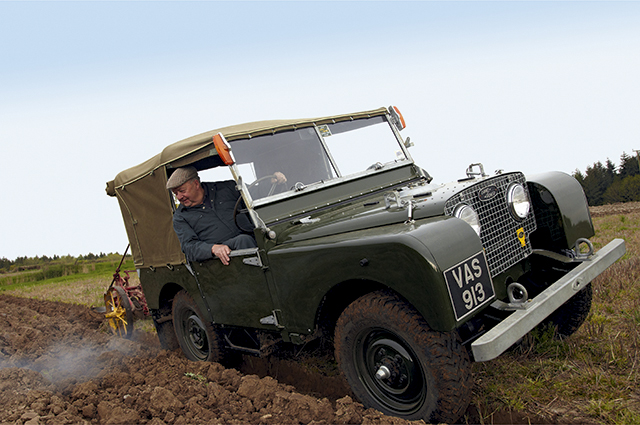The last of the Land Rover Defenders
Graham Scott pays tribute to the much-loved Land Rover Defender


After 67 years of continuous production, the good old Land Rover Defender will stop rolling off the line today. In terms of evolution, the modern Defender is probably more like its ancestor than any other modern vehicle, but that lack of major updates means it won’t pass upcoming legislation and makes it too expensive to produce.
However, it’s precisely that lack of change and familiarity that has charmed so many of us over the years not that many will miss the primitive heating system and dodgy window-winding mechanism.
A new Land Rover bearing the Defender name is set to go into production fairly soon and there are rumours of the current model being built abroad. Whatever the outcome, it’s clear that, despite the obituaries, the Land Rover Defender may yet live to fight another day, albeit with an entirely different look.
Defender of the realm
- Built in 1947, the first prototype Land Rover was based on an American Willys Jeep chassis and featured a central steering wheel
- Launched in a bid to stimulate Rover’s export sales after the Second World War, the Defender was only meant to be manufactured for a couple of years while the company got back to making luxury cars
- The name was first used in 1990 to avoid confusion with Land Rover’s Discovery model, but has been retrospectively deployed for the 90 and 110
- The cover of the Bryan Adams compilation So Far So Good features a 4x4 tyre with the album title picked out in white lettering—it belongs to the rocker’s own 1993 Defender 90
- Famous owners include The Queen, Fidel Castro, Viscount Linley, Kevin Costner, Ralph Lauren, Sean Connery, Oprah Winfrey, Jane Fonda and Sir Paul Smith
- As post-Second World War rationing made steel unavailable, the first Land Rovers were designed using aluminium panels and the surplus of military green paint available
- Until 1980, the Defender’s body panels were made of Birmabright aluminium—the same alloy used in Donald Campbell’s turbo jet-engined K7 hydroplane
- The first Land Rover pre-production model bore the number plate HUE 166
- Land Rover dominated the Camel Trophy (1980–2000), an international adventure competition held over challenging terrain from the Amazon jungle to the taiga forest of Russia and the Atacama Desert in Chile
- Sir Winston Churchill was given a Land Rover for his 80th birthday, with the registration UKE 80. It was fitted with an extra-wide passenger seat with a heated footwell. The 1954 Series 1 sold at auction in 2012 for £129,000, twice the estimate
- In 1992, Land Rover claimed 70% of all the vehicles it had built were still in use
- In the 1980s, many models sported decals (striped stickers) along their sides, but these were phased out in 1997
- In 2011, Land Rover gained the revised 2.2-litre Duratorq engine. This was also found in the Jaguar X-Type, the Ford Mondeo and the Ford Transit van
- Maurice Wilks, engineering director of Rover cars, drew the shape of the Land Rover in the sands of Red Wharf Bay, Anglesey, during a holiday. A map of the bay is etched into the exterior of the one-off, two-millionth Land Rover Defender
- In May 2015, when the two-millionth Land Rover was made, those helping on the production line included Bear Grylls, Invictus Games competitors, Virginia McKenna and Mike Adamson of the British Red Cross. It will be auctioned at Bonhams London on December 16
- A Land Rover is believed to be the first vehicle seen by one third of the world’s population
- The Series II Station Wagon had a 12-seater option, classified under UK tax laws as a bus, which meant it could legally use bus lanes; it was stopped in 2002
- The Cuthbertson featured tank tracks at each corner, devised by Scotsman James A. Cuthbertson to traverse boggy ground
- In the final year of production, three limited-edition vehicles sold out: the Heritage (400 vehicles for UK buyers), the Adventure (600) and the Autobiography (80)
Sign up for the Country Life Newsletter
Exquisite houses, the beauty of Nature, and how to get the most from your life, straight to your inbox.
Country Life is unlike any other magazine: the only glossy weekly on the newsstand and the only magazine that has been guest-edited by HRH The King not once, but twice. It is a celebration of modern rural life and all its diverse joys and pleasures — that was first published in Queen Victoria's Diamond Jubilee year. Our eclectic mixture of witty and informative content — from the most up-to-date property news and commentary and a coveted glimpse inside some of the UK's best houses and gardens, to gardening, the arts and interior design, written by experts in their field — still cannot be found in print or online, anywhere else.
-
 380 acres and 90 bedrooms on the £25m private island being sold by one of Britain's top music producers
380 acres and 90 bedrooms on the £25m private island being sold by one of Britain's top music producersStormzy, Rihanna and the Rolling Stones are just a part of the story at Osea Island, a dot on the map in the seas off Essex.
By Lotte Brundle
-
 'A delicious chance to step back in time and bask in the best of Britain': An insider's guide to The Season
'A delicious chance to step back in time and bask in the best of Britain': An insider's guide to The SeasonHere's how to navigate this summer's top events in style, from those who know best.
By Madeleine Silver